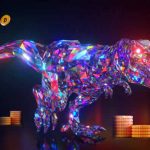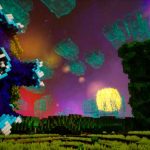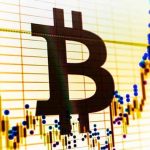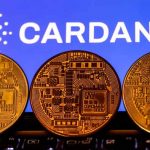The tail end of 2021 saw NFTs take the world of art and gaming by storm, and they show no sign of slowing down as we head in 2022. But what is NFT? From how NFTs work and how to make them, to the controversy around them, we cover all the nitty-gritty details of NFTs in this handy guide.
What is NFT in crypto?
NFT stands for a non-fungible token, which means that hidden in those quirky artworks, there is a totally unique and non-interchangeable unit of data stored on a digital ledger that uses blockchain technology to establish proof of ownership. NFTs are collectable digital assets that hold value, just like how physical art holds value, so do NFTs.
NFTs are a lot like cryptocurrencies such as Bitcoin and Ethereum. However, an NFT is completely unique, and it can’t be exchanged like-for-like, which is where non-fungible starts to make sense. The file stores extra information that elevates it above pure currency and brings it into the realm of, well, anything, really.
Any kind of easily reproduced digital file can be stored as an NFT to identify the original copy, like photography, art, music, videos, tweets, and even memes. You can make NFTs from almost anything unique that can be stored digitally and holds value. They’re like any other collector’s item, like a painting or a vintage action figure, but instead of buying a physical item, you’re instead paying for a file and proof that you own the original copy.
Non-fungible token
A non-fungible token (NFT) is a non-interchangeable unit of data stored on a blockchain, a form of digital ledger.
Types of NFT data units may be associated with digital files such as photos, videos, and audio. Because each token is uniquely identifiable, NFTs differ from blockchain cryptocurrencies, such as Bitcoin.
NFT ledgers claim to provide a public certificate of authenticity or proof of ownership, but the legal rights conveyed by an NFT can be uncertain. NFTs do not restrict the sharing or copying of the underlying digital files and do not prevent the creation of NFTs with identical associated files.
NFTs have been used as a speculative asset, and they have drawn criticism for the energy cost and carbon footprint associated with validating blockchain transactions as well as their frequent use in art scams.
Is NFT a good investment?
While collecting NFTs still requires mostly cryptocurrency, there are many examples where a relatively small investment has the potential for big returns.
Trevor Jones, for example, is a traditional artist who moved into crypto art in 2019. His first NFT piece was EthGirl, a digital painting depicting an animated collage of the Ethereum logo that reveals a face. The NFT art was initially sold for 70 Ether (ETH), equivalent to $10,000 at the time. Two years later, in 2021, with the NFT hype, the artwork was valued at over $8 million.
The value of an NFT or crypto art is determined by the same principles as all other assets. The old law of supply and demand.
As the online community of collectors or buyers and investors grows over time, demand increases. At the same time, as more artists see NFT art as a better option for their creations, the supply increases.
As is the world of traditional art, rare pieces by popular artists are the ones most likely to be appreciated, collected or purchased. There is more demand for 1/1 works than 1 of 100. Auction and secondary sale prices for these art pieces can increase significantly along with collector demand.
The famous British artist Damien Hirst, announced in mid-July the launch of his NFT collection, called ” The Currency “. 10,000 coins were offered to the public, and they were purposely shaped in a way that resembled legal tender.
The originality and generality of this project are that these coins force their holders to make a choice. They can decide to keep the work in physical form or as an NFT stored on the Ethereum ledger. Thus, whenever one form is chosen, the other is destroyed.
The project has been successful: more than 32,000 people have requested 67,000 of these NFT works, almost seven times the number available. At $2,000 each, the sale should reach $20 million.
On the other hand, NFTs are very interesting options for art collectors, because you are buying and investing at the same time in a new revolution and also in the art itself.
Some believe that NFTs will completely change the art world as much as Bitcoin (BTC) and Ethereum (ETH) will change the financial system.
Like all investments, however, as an investor, you need to research the NFT market well. Not all NFT platforms and markets are as safe and reliable as others like OpenSea, Foundation, Nifty Gateway and SuperRare, for example.
For potential investors, there are well-known and well-managed NFT-only art-based trading platforms such as SuperRare, Nifty Gateway, Rarible and Foundation. The NFT market is also very transparent. You can view trade data or past transaction history for individual pieces, artists and, even more usefully, collectors
Why would anyone buy an NFT?
This is usually one of the most frequently asked questions about NFTs: Why would anyone pay for content that, in many cases, can be downloaded? There is a difference between downloading an NFT image and having it on your computer or mobile phone, and owning the original supported by NFT technology.
The image or video you downloaded has no monetary or financial value, while the NFT supported image is an artist’s original work of art. Just as you can go online and download the Mona Lisa image or even buy a Mona Lisa poster, the image and the replicas or copies will never be worth anything close to the verified original. You can even download an image thousands of times, but they are all irrelevant because you don’t own the NFT linked version that verifies that you own the original artwork.
The WePlay Collectibles for example are for people who want to be part of Esports events and show that they like players and talents in a different way, besides merchandising. The WePlay Collectibles are part of a platform, where you can buy items with NFT technology – both digital and physical. They are rewards and items associated with a specific tournament.
How to buy, create and sell non-fungible tokens
NFT stands for “non-fungible token.” NFTs are used to guarantee ownership of a unique asset — usually a digital asset such as a piece of art, musical composition, or an item within a video game.
These tokens are built and managed on a blockchain, the same digital ledger technology system utilized by Bitcoin (CRYPTO:BTC) and other types of cryptocurrencies. NFTs are usually based on the Ethereum (CRYPTO:ETH) network, but there are other blockchains some NFTs use as well, such as Solana (CRYPTO:SOL) and Polkadot (CRYPTO:DOT).
Think of these digital tokens as a type of virtual certificate similar to a physical certificate or title that you might present to prove you own a physical asset such as real estate. They’re a digital proof of ownership originally designed for digital assets and art. However, NFTs can also be used to guarantee ownership of unique physical assets for everything from property to collectibles to physical works of art. For our purposes, we’ll refer to NFTs primarily as representing virtual assets unless otherwise specified.
How to buy NFTs
NFTs are bought and sold via a purpose-built NFT marketplace, kind of like Amazon (NASDAQ:AMZN) or Etsy (NASDAQ:ETSY), only for digital assets. These marketplaces can be used to buy an NFT at a fixed price or function as a virtual auction, much like the exchange system for buying and selling cryptocurrencies and stocks. Prices on NFTs listed for sale via auction are therefore volatile, changing in value depending on demand. The higher the demand, the higher the price.
A key difference between NFTs and stocks and cryptos is that stocks and cryptos are fungible — meaning each unit is just like the other. One share of Amazon is the same as another share of Amazon, and one Bitcoin token is equal to another. NFTs are non-fungible, meaning the token you buy represents a unique item not directly replaceable by anything else.
To bid on these digital assets, you’ll need to open and fund a crypto wallet on an NFT marketplace. A crypto wallet, like a digital wallet on an e-commerce platform, stores cryptocurrencies needed to purchase an NFT. A wallet needs to be funded with the crypto needed to buy a targeted NFT. For example, an NFT built on the Ethereum blockchain technology might require its purchase in Ether tokens.
There are a variety of marketplaces that support NFT purchases. Top NFT marketplaces include OpenSea, Rarible, SuperRare, and Foundation. There are other niche marketplaces that specialize in particular assets. For example, NBA Top Shot is owned by the National Basketball Association and sells clips of player performances as NFTs. Regardless of the marketplace, a crypto wallet will need to be opened and funded before bidding on and buying an NFT.
How to sell NFTs
Once you own an NFT, the digital asset is yours to do with as you please. You can keep it as a collectible, display it for others to see, or use it as part of a larger digital project. You can also list it for sale. Marketplaces charge a fee for NFT sales. These fees can fluctuate based on the blockchain network the NFT uses since the blockchain computing needed to verify the NFT consumes energy, known as a “gas fee.”
To sell a digital asset you own, the piece will need to be uploaded to your marketplace of choice, provided that marketplace supports the blockchain the NFT was built on. From there, you can choose to list it for sale at a set price or opt for an auction-style sale in which buyers place bids.
Once uploaded, the marketplace will verify the asset. After it’s sold, the marketplace will handle the transfer of the NFT from the seller to the buyer and will also transfer crypto funds to your wallet less the listing fee and other related blockchain computing expenses.
How to create NFTs
Part of the allure of NFTs comes from creators — artists, musicians, filmmakers, writers, and the like — who can guarantee the authenticity of their work and monetize it as NFTs. Anyone can turn a digital asset into an NFT (or “mint” it) and sell it on a marketplace.
Each platform handles things a little differently, but the basic minting process is as follows:
Have a crypto wallet opened and funded (like with Ether in order to cover the computing fees involved with creating the NFT).
Click the “create” button within the marketplace and upload your work.
List the NFT for sale either for a fixed price or for sale via auction.
On the other hand, NFTs are good investments if you think they are the future because they democratize access to art ownership. Crypto art or NFT art provides a better option for those with less capital to invest in digital pieces. Digital art ownership has proven to be a revolution since the advent of the internet.
Yes, you can. This is the second option to making money with NFT. Selling NFTs isn’t just for creators. Some entrepreneurs and investors utilize NFTs like stocks and profit by buying and selling them.
To brief the audience NFT stands for Non-fungible Tokens. They represent real ownership of a particular product with a particular individual. They are assets that can be collected and hold value. Just as the other physical artworks have limited editions, NFT can also be categorized as limited editions.
NFTs are also making waves as in-game purchases in video games (much to the delight of parents everywhere, we’re sure). These assets can be bought and sold by players, and include playable assets like unique swords, skins or avatars
Also read:
- How to Track gains and losses in the World of Cryptocurrency?
- The company of Outerverse was subject of a scam. How’s that possible?
- Can we use NFT in Outerverse Game? What are NFT Games?
- Why is BTC and ETH dropping? Why is crypto dropping right now?
- What is Metaverse Cryptocurrency? Which is Best Metaverse Crypto?











